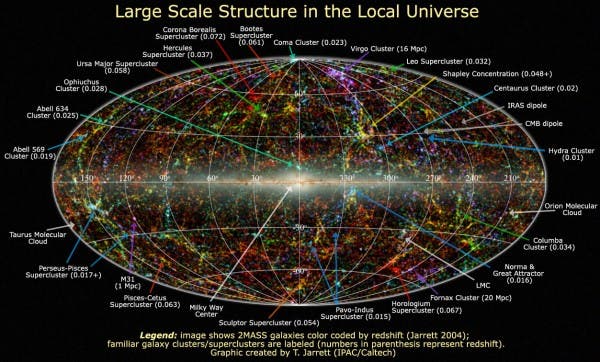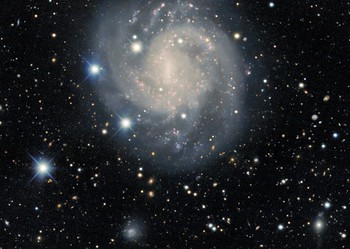A faint, blue galaxy 30 million light years away from Earth could help us understand the conditions from the birth of the Universe. Nicknamed “The Little Lion”, the galaxy contains the lowest level of heavy chemical elements ever observed in a system of stars – meaning its make-up is similar to what was happening directly after Big Bang.

Astronomers use the word “metals” when referring to all elements except hydrogen and helium. Our current models of the Big Bang have very specific amounts of hydrogen and helium. As there was more and more stellar activity, more and more metals were also created. The “Little Lion” galaxy is the poorest in metals we know of, and this means that it has remained relatively “pristine”, close to the original Big Bang conditions.
Astronomer John J. Salzer of Indiana University was co-author on the new study, which was led by graduate studyAlec S. Hirschauer. Salzer said:
Finding the most metal-poor galaxy ever is exciting since it could help contribute to a quantitative test of the Big Bang. There are relatively few ways to explore conditions at the birth of the universe, but low-metal galaxies are among the most promising.
Basically, these galaxies have kept their chemistry relatively unchanged. By studying them, we can figure out (to some extent) what the chemical conditions of the Big Bang really were, and then we can compare them to our models and see how they fare, as researchers said in a statement.
The elemental make-up of metal-poor galaxies is very close to that of the early universe.
To find these low-metal galaxies, however, [we] must look far from home. Our own Milky Way galaxy is a poor source of data due to the high level of heavier elements created over time by stellar processing, in which stars churn out heavier elements through nucleosynthesis and then distribute these atoms back into the galaxy when they explode as supernovae.







